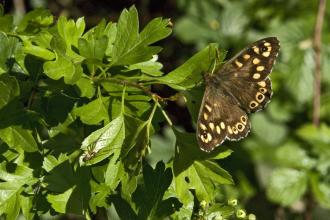John Haddon
Lincolnshire Wildlife Trust
Lincolnshire Wildlife Trust
Keal Carr
Location
Know before you go
Dogs
Assistance dogs only
When to visit
Opening times
Open at all timesBest time to visit
April to JulyAbout the reserve
This is probably the finest surviving example of the alder carrs of the southern Wolds, growing in small valleys created by streams cutting down through the soft Spilsby Sandstone into the Kimmeridge Clay below. The feature is also represented in the Snipe Dales and Sow Dale reserves.
The upper slopes on the sandstone have an abundance of bluebells and red campion, but below the spring line on the impervious clay the ground is permanently wet and the woodland consists chiefly of alder and willow, which have been traditionally coppiced. Marsh-marigolds carpet this woodland floor in spring. Moschatel is also abundant, and there are both native species of golden-saxifrage: the opposite-leaved and the much rarer and rather finer alternate-leaved. In more open places there is a tall herb community, with yellow iris, giant horsetail, meadowsweet and angelica. There is a rich and varied bird fauna.
Management aims are the restoration of woodland cover in one area of the valley, and the removal of sycamore, which has become over-dominant in places. The lower part of Keal Carr is now a sanctuary area with no public access.
Nearest postcode PE23 4AS. Please note - postcodes are for the nearest registered address as we are unable to get postcodes for nature reserves.
Location information
Access the reserve using the public footpath from the A16 or from the narrow road (signposted to Old Bolingbroke and Mavis Enderby) off the A16, a short distance east of East Keal. There is room for parking on the right-hand verge after a sharp left bend and the reserve can be reached via the public footpath along Brickyard Lane.



